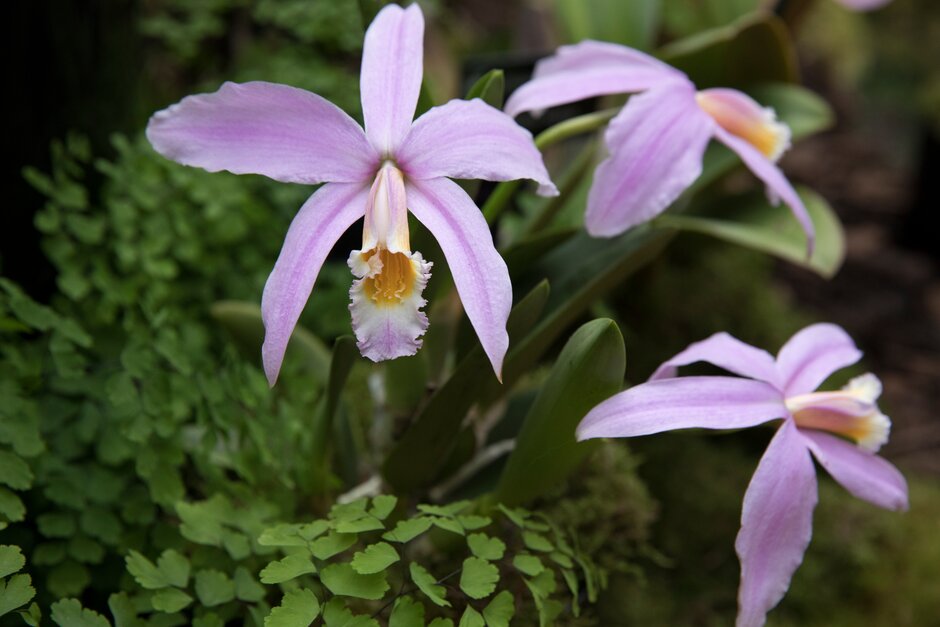Cattleya jongheana
An epiphytic orchid to 17cm tall often remaining evergreen in cultivation with a single, leathery, oblong to elliptic 12cm-long leaf. Comparatively large flowers, 10-16cm in diameter, are borne in late winter and early spring; pinkish-purple petals surround a downward-pointing 5cm-long lip that is pale lilac on the outside and golden-yellow inside

Size
Ultimate height
0.1–0.5 metresTime to ultimate height
2–5 yearsUltimate spread
0.1–0.5 metresGrowing conditions
Moisture
Well–drainedpH
Acid, NeutralColour & scent
| Stem | Flower | Foliage | Fruit | |
| Spring | Pink Purple | Green | ||
|---|---|---|---|---|
| Summer | Green | |||
| Autumn | Green | |||
| Winter | Pink Purple | Green |
Position
- Partial shade
Aspect
West–facing or East–facing or North–facing
Exposure
Sheltered Hardiness
H1CBotanical details
- Family
- Orchidaceae
- Native to GB / Ireland
- No
- Foliage
- Semi evergreen
- Habit
- Columnar upright
- Genus
A genus of tropical orchids native to South and Central America. Thick fleshy roots of these epiphytic plants grow from thick rhizome. Cylindrical, swollen stems called pseudobulbs serve as storage of water and nutrients. Large, long-lasting flowers are held at the top of newly formed, mature pseudobulbs. Genus Cattleya is often cross bred with other similar genera, and can be traced in parentage of numerous, inter-generic, orchid hybrids
- Name status
Unresolved
How to grow
Cultivation
Grow in epiphytic orchid compost and from late spring to summer, in partial shade with good ventilation, day temperatures between 18-25°C and night between 13-15°C, water freely adding orchid fertiliser every third watering and provide high humidity by misting twice daily. Keep in well lit conditions from autumn to early spring. See indoor orchid cultivation
Propagation
Propagate by division when the plant over-fills the pot
Suggested planting locations and garden types
- Patio and container plants
Pruning
No pruning required, cut down flowered stems as necessary
Pests
May be susceptible to aphids, glasshouse red spider mite and mealybugs
Diseases
Generally disease-free
Love gardening
Sign up to receive regular gardening tips, inspiration, offers and more
View our Privacy Policy
Get involved
The Royal Horticultural Society is the UK’s leading gardening charity. We aim to enrich everyone’s life through plants, and make the UK a greener and more beautiful place.